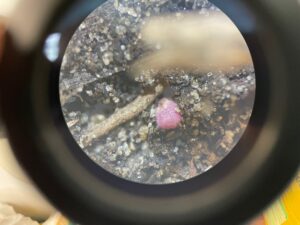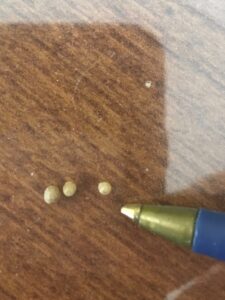Do You Have Ground Pearls?
go.ncsu.edu/readext?1062779
en Español / em Português
El inglés es el idioma de control de esta página. En la medida en que haya algún conflicto entre la traducción al inglés y la traducción, el inglés prevalece.
Al hacer clic en el enlace de traducción se activa un servicio de traducción gratuito para convertir la página al español. Al igual que con cualquier traducción por Internet, la conversión no es sensible al contexto y puede que no traduzca el texto en su significado original. NC State Extension no garantiza la exactitud del texto traducido. Por favor, tenga en cuenta que algunas aplicaciones y/o servicios pueden no funcionar como se espera cuando se traducen.
Português
Inglês é o idioma de controle desta página. Na medida que haja algum conflito entre o texto original em Inglês e a tradução, o Inglês prevalece.
Ao clicar no link de tradução, um serviço gratuito de tradução será ativado para converter a página para o Português. Como em qualquer tradução pela internet, a conversão não é sensivel ao contexto e pode não ocorrer a tradução para o significado orginal. O serviço de Extensão da Carolina do Norte (NC State Extension) não garante a exatidão do texto traduzido. Por favor, observe que algumas funções ou serviços podem não funcionar como esperado após a tradução.
English
English is the controlling language of this page. To the extent there is any conflict between the English text and the translation, English controls.
Clicking on the translation link activates a free translation service to convert the page to Spanish. As with any Internet translation, the conversion is not context-sensitive and may not translate the text to its original meaning. NC State Extension does not guarantee the accuracy of the translated text. Please note that some applications and/or services may not function as expected when translated.
Collapse ▲What are Ground Pearls? They are a tiny insect, very much like a scale insect in that they have a hard body covering that protects them from predators and the elements while they feed on the roots of turfgrass. That’s right, they live in the soil their entire life. They overwinter in the cyst stage, which is the stage that looks like a pearl in the soil. In May and June the adults will emerge and crawl to find some healthy roots of grass where they will lay their eggs before they die. The adult female is about 1/16th of an inch long and pink. The pink color makes her very visible in the soil.

Ground pearl female
Where would ground pearls be found? They are usually found on the edge of a dead circle of grass. They feed on the roots of the grass and when they feed in large enough numbers and the grass is stressed enough they kill the grass, making a dead patch. The dead area gets larger every summer as the number of ground pearls increases and the circle gets bigger. During the winter and early spring examining the roots and soil at and just inside the edge of the dead area will reveal yellowish or gray round to oval pearls that are about 1/16th of an inch or slightly bigger and much smoother than a grain of sand. A good way to tell the difference between a ground pearl and a grain of sand is that with enough pressure the ground pearl will pop and the sand will not.

Ground pearl size
What can be done to control ground pearls? That is a question that has eluded answer even by researchers who have attempted to answer the question. All types of insecticides have been tried, with very little effect on the ground pearls. Currently, the best recommendation for controlling this insect is to have a healthy and vigorous lawn that will out compete the effects of the feeding done by the ground pearls. This means following the recommendations on the soil test report for adjusting the soil pH and nutrient levels. Fertilize the lawn according to the lawn maintenance calendar for that type of lawn. Mow at the proper height and at the proper frequency so as not to remove any more than 1/3 of the leaf blade with each mowing and regularly sharpen the lawn mower blades. A sharp blade makes a clean cut that will stress the grass less than a jagged cut made by a dull blade. If an irrigation system is available, apply about 1 to 1.5 inches of water each week, preferably with one or at most two applications. If two applications of water are used, apply 0.5 to 0.75 inches of water with each application.
There is a researcher from NC State University coming to Carteret County to look at some areas that have ground pearls. If you think you have ground pearls based on the above description, please contact Shawn Banks or (252) 222-6463. The researcher has a limited amount of time to look at sites while in county, so she may not be able to get to every site.




